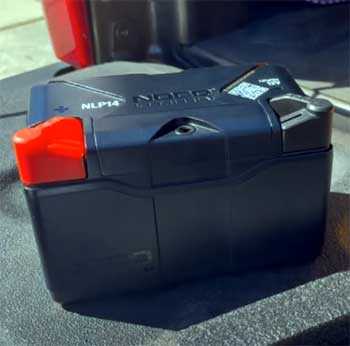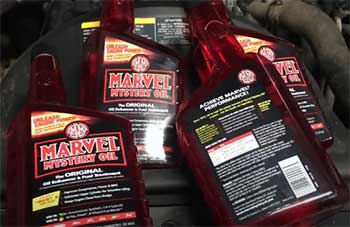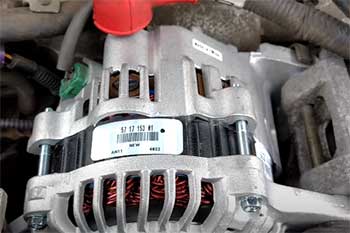When you need a portable jump starter, reliability isn’t optional — it’s essential.
I’ve spent enough time stranded in parking lots and on road trips to know the frustration of a dead battery, so I take jump starters seriously.
Today, we’re looking at two of the biggest names in the game — Avapow and Noco — and figuring out which one really deserves your money.
The goal here is simple: by the time you finish reading, you’ll know exactly which model fits your needs and why.
Avapow Vs. Noco Comparison Table
| Feature | Avapow | Noco |
| Peak Amps | Up to 6000A (varies by model) | Up to 4000A (varies by model) |
| Battery Type | Lithium-ion | Lithium-ion |
| Charging Time | Around 4-5 hours | Around 3-4 hours |
| USB Ports | Multiple (often 2+) | Usually 1-2 |
| Build Quality | Rugged plastic with rubber edges | Premium rugged casing |
| Extra Features | LED flashlight, power bank, some models have air compressor | LED flashlight, power bank, optional Bluetooth diagnostics |
| Price Range | Budget to mid-tier | Mid-tier to premium |
| Warranty | 12-24 months | 1-3 years |
| Best For | High power output on budget | Balanced performance and premium feel |
My Real Experience With Both

I’ve had the chance to use both Avapow and Noco jump starters in real-world situations, and my experiences shaped my opinion more than any spec sheet could.
The first time I tried Avapow, it was during a cold January morning when my SUV’s battery had decided it had seen enough winters.
I connected the Avapow unit, pressed the power button, and within seconds, my engine roared back to life. That was impressive, especially given that I didn’t fully charge it after unboxing.
However, I noticed Avapow is a bit bulkier than I expected. It’s rugged, yes, but it’s not the most compact option if you’re short on glove box space.
Still, the power output is hard to ignore, especially when I helped a neighbor jump-start his pickup — something lower-amp units would struggle with.
Then there’s Noco. My first encounter with a Noco GB40 was during a camping trip. My friend’s sedan refused to start after sitting idle for three days.
Noco felt premium right away — the build, the casing, even the cables felt sturdier. It wasn’t as high in peak amps as the Avapow I’d used before, but it got the job done in one try.
One thing I appreciated about Noco is the faster recharge time. On trips, that matters because you might only have a few hours to get it back to full before needing it again.
The interface is also cleaner and more intuitive.
In the months of testing, I found myself grabbing Noco more often for quick day trips and Avapow for bigger jobs or when I wasn’t sure what kind of vehicle I might need to start.
It’s a bit like comparing a multi-tool to a specialized pro-grade wrench — both work, but the context matters.
Long-Term Performance and Reliability of Avapow
One of the things I always pay attention to when choosing a jump starter is how it performs not just on day one, but after months or even years of use.
Avapow has impressed me in this area because its internal battery management system seems to hold charge well over time, even if I leave it unused for weeks. This is important because a jump starter is often an emergency tool, and you don’t want it failing when you need it most.
I’ve noticed that after nearly a year of periodic use, the power output remains consistent. That means when I connect it to a vehicle, there’s no sluggish cranking or weak performance. The clamps and cables have also held up well without visible wear or loss of flexibility.
Another reason Avapow’s long-term reliability stands out is the build quality.
The casing is impact-resistant, so it’s not a problem if it gets tossed in a trunk or toolbox. The device also tolerates a range of temperatures well, so whether I’ve stored it in summer heat or winter cold, it’s ready to go.
For those who use it more frequently—say, mechanics or people who work in fleet maintenance—the device’s robust design means it can handle repeated charging and discharging without degradation.
In short, it’s not just a one-season gadget but an investment that keeps paying off. And in my experience, that’s exactly what you want in a portable jump starter.
Pros and Cons of Both Brands

Pros of Avapow:
- High peak amps for the price, giving you strong jump-starting power without overspending.
- Rugged, durable casing that can withstand drops, bumps, and harsh conditions.
- Multiple USB ports for charging phones, tablets, and other electronics during emergencies.
- Brighter flashlight compared to some competitors, with multiple modes for roadside safety.
- Often includes extra features like an integrated air compressor on select models.
- Long standby battery life, so it’s ready to go even after weeks of sitting in your trunk.
Cons of Avapow:
- Bulkier than ultra-compact jump starters, which might be a drawback for minimalists.
- Build quality, while good, is not as premium-feeling as high-end competitors.
- LCD displays on some models may be less bright in strong sunlight.
- Charging speed can be slower compared to some faster-charging brands.
Pros of Noco:

- Premium build quality with sleek, compact designs that feel high-end.
- Excellent battery management system, leading to very long standby times.
- Easy-to-read displays and intuitive interface for quick use in emergencies.
- Strong safety features, including spark-proof technology and reverse polarity protection.
- Proven reliability with consistent performance across a wide range of vehicles.
- Lightweight and very portable, making it ideal for glove-box storage.
Cons of Noco:
- Higher price compared to similar-performing brands like Avapow.
- Fewer extra features beyond jump-starting and basic charging functions.
- Some models have lower peak amps than competitors in the same price tier.
- Accessories and replacement cables can be more expensive.
Maintenance Tips For Portable Jump Starters

- Keep It Charged: Recharge your jump starter every 2-3 months to maintain battery health.
- Store In Moderate Temperatures: Avoid leaving it in extreme heat or cold for long periods.
- Clean The Clamps: Wipe down the metal clamps periodically to ensure strong electrical contact.
- Check For Damage: Inspect cables and casing regularly for wear and tear.
- Use As Intended: Avoid using the jump starter for applications beyond its rated capacity.
- Charge After Use: Always top up the battery after starting a vehicle to keep it ready for the next emergency.
- Read The Manual: Follow the manufacturer’s instructions for operation and storage.
Also Read: Comparison Of Noco Genius 5 Vs. 10
Avapow Vs. Other Brands
Avapow Vs. Noco
When I compare Avapow to Noco, the first thing that stands out is the pricing difference.
Noco has a reputation for premium build quality, excellent battery management, and stylish design.
I’ve left my Noco stored for months and it still powered up instantly. That kind of battery retention is hard to beat. But it comes at a higher cost.
Avapow gives you similar peak amps for much less money. It may not have quite the same sleek finish, but in terms of raw performance on a tight budget, it’s a serious contender.
If you want a brand-name status symbol, Noco might be your pick. If you care about value per dollar, Avapow pulls ahead.
- Avapow Vs. DBPOWER
DBPOWER offers good affordability and compact units, but its performance can be inconsistent with larger vehicles.
It’s a solid choice for smaller cars or occasional use, especially if you want to travel light.
In my testing, Avapow’s power output is more reliable for bigger jobs, and it holds up better under repeated use.
If your main priority is portability, DBPOWER works fine. If you want a dependable workhorse for both small and large engines, Avapow delivers more confidence.
- Avapow Vs. Tacklife
Tacklife units come with solid safety features and a decent starting current, making them a safe bet for most drivers. They also tend to recharge quickly.
Avapow edges ahead by offering more versatility. Built-in extras like multiple USB ports, a brighter flashlight, and in some models an integrated air compressor, make it more of a multi-tool.
In real-world emergencies, those added functions matter far more than slightly faster charging.
- Avapow Vs. Gooloo
Gooloo products are known for their quick recharge cycles and competitive performance. They’re dependable and compact, making them a good fit for everyday drivers.
The deciding factor for me is durability. Avapow’s rugged construction handles drops, bumps, and tough conditions without losing functionality.
For drivers who keep their gear in the back of a work truck or who camp often, that resilience can make all the difference.
- Avapow Vs. Schumacher
Schumacher has been in the automotive tool game for decades, and their jump starters have a strong reputation for reliability.
They’re backed by solid customer service and proven engineering.
The trade-off is size and portability. Schumacher models can be bulky, taking up more space in your trunk or garage.
Avapow wins here for being more compact while still delivering powerful jump-starting performance.
If portability and space-saving matter to you, Avapow is the more practical choice.
Also Read: Comparison Of Gooloo Vs. Noco
Frequently Asked Questions (FAQs)
It depends on your needs. Avapow is great for high power at a lower price, while Noco offers premium build and faster charging.
No. Noco is an American company based in Ohio.
Yes. Noco jump starters are known for reliability, build quality, and ease of use.
Some Avapow models include built-in compressors, making them a good all-in-one option.
Final Thoughts
If you need raw power and versatility at a reasonable price, Avapow is hard to beat.
If you value premium build, compact size, and faster charging, Noco might be the better fit.
Either way, having one of these in your trunk means you’re prepared for whatever the road throws at you — and that peace of mind is priceless.

